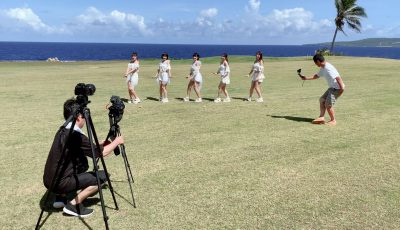Drought to impact water supply in Marianas
Several drought impacts may affect the Commonwealth this year as the Marianas is entering the El Nino’s dry phase.
According to the National Weather Service-Forecast Office Guam warning coordination meteorologist Chip Guard the drought could last until August.
“We don’t know how bad the drought is going to be. We know how bad the El Nino has been and it is one of the three strongest in the last 100 years. Based on that, it’s going to be a fairly serious drought,” Guard said.
Currently, some part of Micronesia is under drought level 2 or D2, which means severe drought and that crop or pasture losses are likely, water shortages common, and water restrictions may be imposed.
NWS said this number will likely increase from D2 to a more severe drought across all of Micronesia.
Guard said the driest months would be around March and April and rains will not be sufficient until August.
“If you get rain, you might get one day of rain, that’s not going to do much. If people have catchments they might get temporary source of water. But for the most part, the rain showers are going to be light, they’re going to be scattered, they’re going to be random, they’re not going to hit the same place every day,” Guard said.
Guard said at least a 10th of an inch rain is needed for the catchments, while a quarter of an inch is needed for water to get into the soil or into the aquifer.
“But if the soil is already dry, one of two things happen, either it takes all that water to saturate the soil, but if it’s already dry and it’s packed then when it rains hard, it doesn’t sink in, then you get runoff,” Guard said.
Runoffs could then cause water to go directly to the ocean which could bring with it dirt that will not be good for the reefs.
Because of insufficient rain and dry weather, several impacts are anticipated to be experienced.
First, aquifers will have less water and the soil will dry up.
“The aquifer here on Saipan is fairly shallow in the coastal areas where most of the wells are. As they get thinner and thinner, there is no rain to reinforce the lens, water is constantly running back to the ocean. Eventually the lens gets thinner and thinner,” Guard said.
“Sea levels are low right now. If they’re trying to pump from wells that are near the coastline, they have a much bigger chance of pulling in salt water,” he added.
Guard said NWS is encouraging water conservation to be practiced.
There are also possibilities of grass fires as vegetation, and plants dry up.
This is one of the main vulnerabilities on Tinian.
“[Tinian has] a really good aquifer, they have a lot of water so the wells are good but the grasses are going to die and the livestock wouldn’t have anything to eat,” Guard said.
“In 1998, I think a thousand cattle died during the drought,” he added.
Tinian was impacted by the severe drought that followed the strong El Nino event during the latter half of 1997 when the island received less than half of its average annual rainfall.
“Rota is in pretty good shape because they have a lot of wells but the water caves in Rota will dry up,” Guard said.
Warm temperatures will also have an effect on bodies of water.
“Later on the spring, the trade winds are going to come back in stronger. That’s going to cause the water to start piling up and then it’s going to mix the warm water on the top down into the ocean and the ocean is going to expand,” Guard said.
“So the sea level is going to go up and then you’re going to be more susceptible to coastal erosion,” he added.
Guard said that even if the islands get the same size of swells and waves from Japan, the sea levels will be a foot higher which could then do more damage to coasts.
After the drought, the well-awaited rainfalls could also pose problems to barren soil.
“Erosions are a problem because once the grass fires get rid of the grass and when the rain comes back, it comes back really hard and it starts eroding the bare soil,” Guard said.
Guard said with regards to health, the public should also be concerned about stagnant water during the dry season where mosquitoes could multiply and spread diseases such as dengue fever.
“Mosquitoes will lay their eggs and when the rain comes back, those eggs will hatch,” Guard said.



























